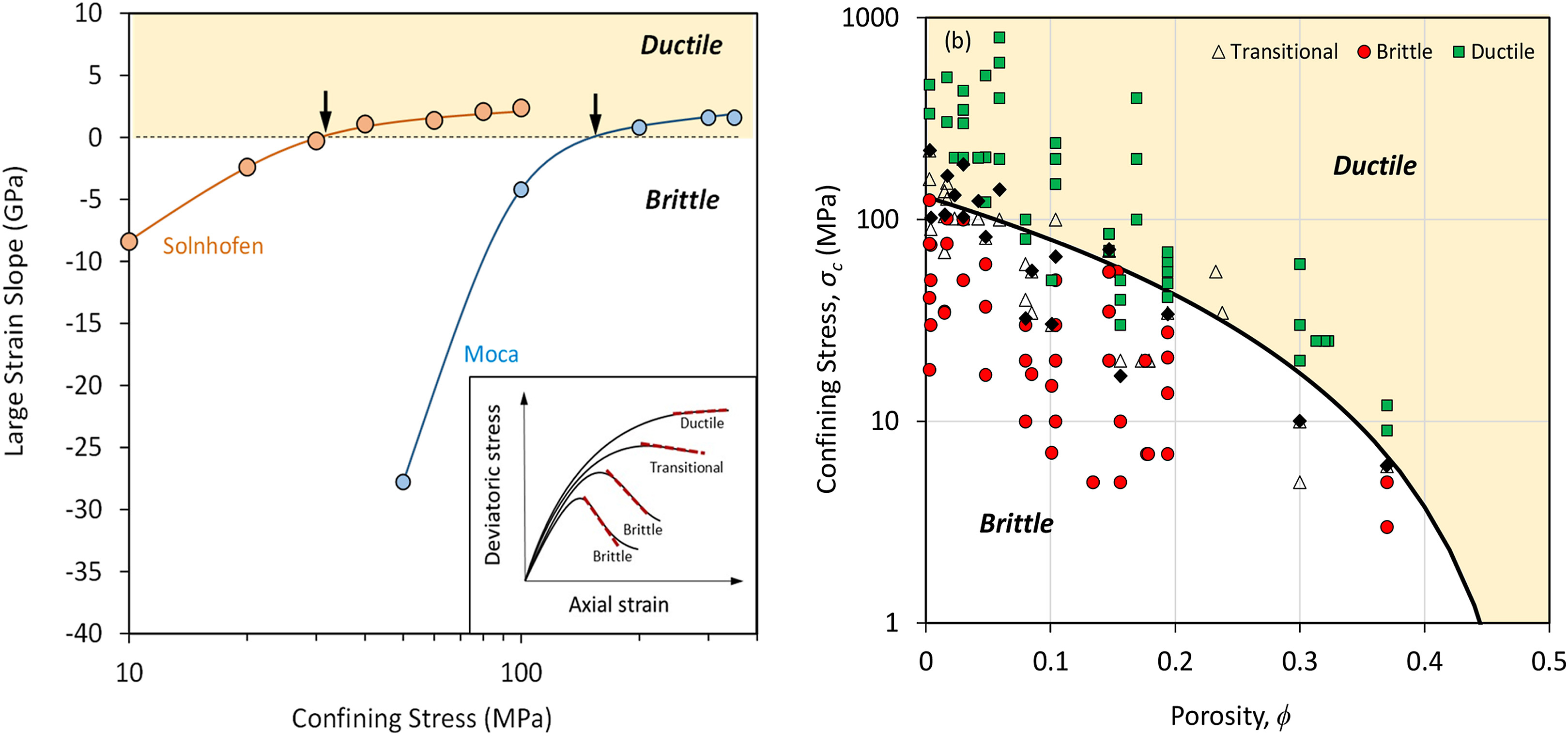JRMGE / Vol 15 / Issue 4
Mechanical and hydraulic properties of carbonate rock: The critical role of porosity
Kam Ng, J. Carlos Santamarina
Show More
a Department of Civil and Architectural Engineering and Construction Management, University of Wyoming, Laramie, WY, 82071, USA
b Physical Science and Engineering Division, King Abdullah University of Science and Technology, Thuwal, 23955-6900, Saudi Arabia
2023, 15(4): 814-825. doi:10.1016/j.jrmge.2022.07.017
Received: 2022-02-26 / Revised: 2022-05-04 / Accepted: 2022-07-17 / Available online: 2022-09-06
2023, 15(4): 814-825.
doi:10.1016/j.jrmge.2022.07.017
Received: 2022-02-26
Revised: 2022-05-04
Accepted: 2022-07-17
Available online: 2022-09-06
Carbonate rocks are extensively used in civil infrastructure and play a critical role in geoenergy geoengineering, either as hydrocarbon reservoirs or potential repositories for CO2 geological storage. Carbonate genesis and diagenetic overprint determine the properties of carbonate rocks. This study combines recent data gathered from Madison Limestone and an extensive dataset compiled from published sources to analyze the hydraulic and mechanical properties of limestone carbonate rocks. Physical models and data analyses recognize the inherently granular genesis of carbonate rocks and explain the strong dependency of physical properties on porosity. The asymptotically-correct power model in terms of (1-ϕ/ϕ∗)α is a good approximation to global trends of unconfined stiffness E and unconfined compressive strength UCS, cohesive intercept in Mohr-Coulomb failure envelopes, and the brittle-to-ductile transition stress. This power model is the analytical solution for the mechanical properties of percolating granular structures. We adopted a limiting granular porosity ϕ∗ = 0.5 for all models, which was consistent with the loosest packing of monosize spheres. The fitted power model has exponent (α = 2) in agreement with percolation theory and highlights the sensitivity of mechanical properties to porosity. Data and models confirm a porosity-independent ratio between unconfined stiffness and strength, and the ratio follows a log-normal distribution with mean (E/UCS) ≈ 300. The high angle of internal shear strength measured for carbonate rocks reflects delayed contact failure with increased confinement, and it is not sensitive to porosity. Permeability spans more than six orders of magnitude. Grain size controls pore size and determines the reference permeability k∗ at the limiting porosity ϕ∗ = 0.5. For a given grain size from fine to coarse-grained dominant carbonates, permeability is very sensitive to changes in porosity, suggesting preferential changes in the internal pore network during compaction.
Keywords: Rock porosity, Carbonate permeability, Rock unconfined stiffness, Unconfined compressive strength (UCS)
Article Data
Author(s) Information
Kam Ng

Dr. Kam Ng obtained his BSc, MSc and PhD degrees in Civil Engineering from Iowa State University, USA. He had 10-year building consulting and construction experiences. He is currently an Associate Professor at University of Wyoming, and a Professional Engineer registered with the State of Wyoming, USA. His research focuses on transportation and energy geotechnics, and innovative building materials. He received the 2022 Samuel Hakes Outstanding Graduate Research and Teaching Award from the College of Engineering and Applied Science, 2022 Mid-Career Graduate Faculty Mentor Award from the University of Wyoming, 2013 Young Professor Paper Award, first runner-up, from the Deep Foundation Institute and 2012 Soil Mechanics Best Paper Award from the Transportation Research Board. He was the 2022 American Society of Civil Engineers Geo-Institute State-of-Practice Speaker. He published more than 85 papers and 20 technical reports and received more than 6.5 millions in research funding.

